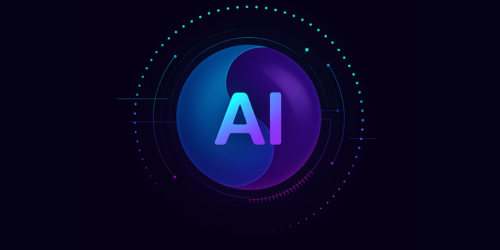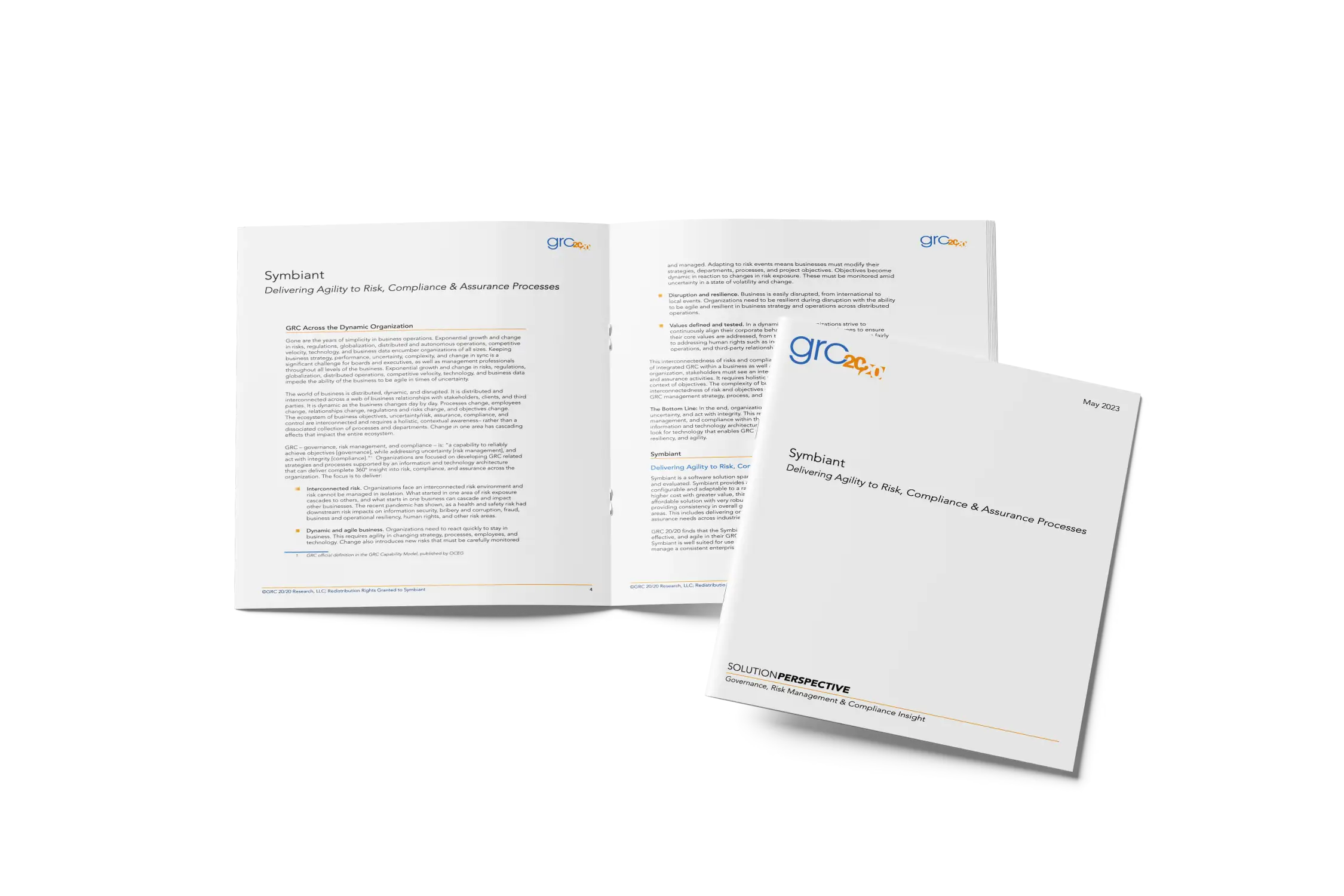Risk management software
Controls and Policies Software for Risk Management – Automate Testing, Ensure ISO 27001 Compliance, Strengthen Audit Readiness, and Build Business Resilience
How to build a controls management framework that strengthens risk management, improves compliance with iso 27001, supports audit readiness, enhances business resilience, and integrates seamlessly with your enterprise risk management system
From only £100 per module/month for unlimited users*
Award-Winning GRC & Audit Software, Trusted Since 1999 by Companies of All Sizes


































Risk Controls & Policies Software
Why effective Controls and Policies Software is key to Risk Management, ISO 27001 compliance, audit readiness, and business resilience
Understanding and effectively managing controls and policies is essential for your organisation’s long-term business resilience, ISO 27001 compliance, and sustainable success. Explore how to develop and maintain a robust controls and policies framework that aligns with your risk management strategy, strengthens your compliance management processes, and supports your strategic business objectives.
By recognising the importance of risk controls, defining their key components, categorising them effectively, and ensuring performance through regular Risk Control Self-Assessment (RCSA), testing, and reporting, organisations can build a controls and policies framework that not only protects against operational, financial, and reputational risks but also enhances overall compliance oversight, audit readiness, and business performance.
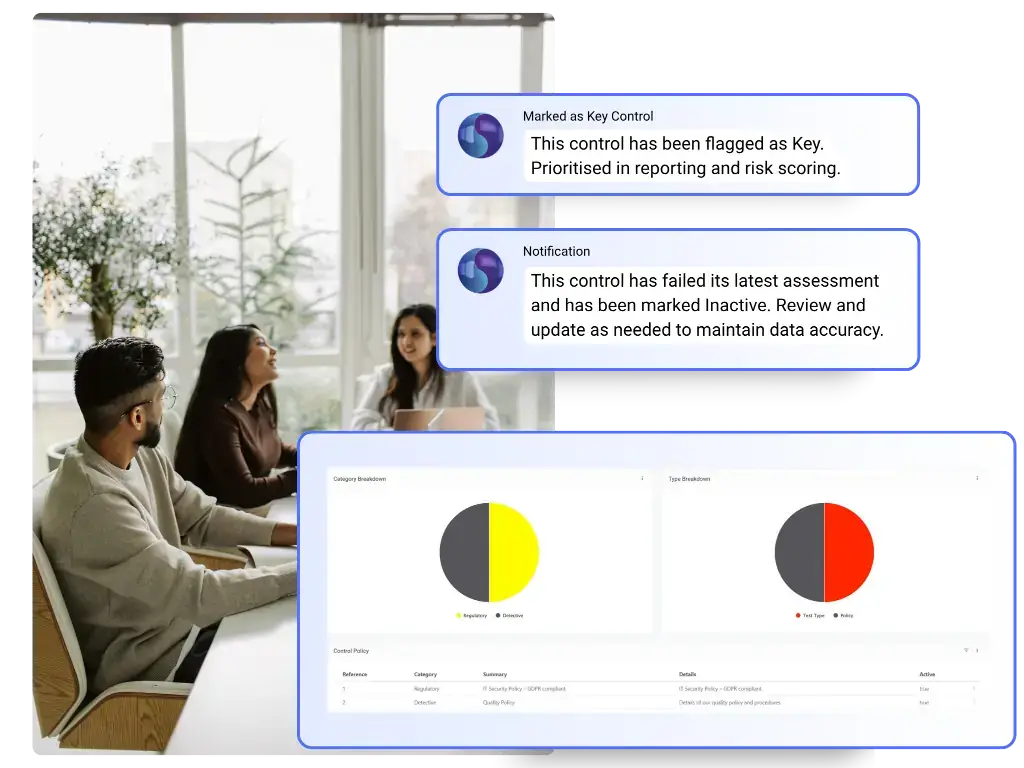
Why risk controls are essential for effective risk management, compliance, and protecting your organisation from threats
Risk controls are the foundation of every strong risk management framework. They act as the mechanisms that identify, limit, reduce, or modify risks, protecting organisations from operational, financial, information security, and reputational threats. Effective controls and policies management not only mitigates the likelihood of risks occurring but also minimises their impact when they do. Without a structured controls management framework, businesses leave themselves vulnerable to ISO 27001 compliance failures, audit readiness gaps, regulatory breaches, and costly business disruptions.

What are the essential elements of a strong controls management framework for risk management, ISO 27001 compliance, and audit readiness
Building an effective controls management framework begins with a clear understanding of the risks your organisation faces. This means mapping controls to specific risks, assigning ownership and accountability, and regularly assessing whether those controls remain effective and relevant. Success depends on clearly defined roles, transparent communication, and continuous monitoring, ensuring that every control actively contributes to your overall risk management, compliance, and business resilience strategy.

Preventive controls – designed to stop risks from occurring in the first place, such as segregation of duties, password policies, or physical access restrictions.
Detective controls – used to identify risks already in progress, including reconciliations, audits, exception reports, or monitoring systems.
Reactive (or corrective) controls – applied when a risk has materialised, helping to minimise impact through measures such as incident response, insurance, or disaster recovery.
Directive controls – guide behaviours and outcomes through clear instructions such as policies, procedures, and codes of conduct.
Risk Controls & Policies Software
What are the different types of risk controls?
In modern risk management and compliance, risk controls can be categorised into several distinct types: preventive, detective, corrective, and directive controls, each serving a specific purpose in reducing risk exposure, strengthening internal controls, and supporting regulatory compliance.
Understanding and applying these categories ensures your controls and policies framework is comprehensive, proactive, and aligned with both ISO 31000 risk management principles and ISO 27001 information security standards. By addressing risks at every stage of their lifecycle, from identification and assessment to monitoring and remediation, organisations can build a more resilient, audit-ready, and compliance-driven controls environment.
Regular reviews and assessments to confirm controls remain relevant and effective.
Automated controls testing (such as scheduled questionnaires in Symbiant) to ensure controls function as intended and to flag weaknesses early.
Action tracking to remediate issues promptly and assign accountability with clear deadlines.
Continuous alignment with risks and incidents, so that controls are updated whenever your business environment or risk profile changes.
Risk Controls & Policies Software
How can I ensure controls remain effective?
Maintaining effective controls is not a one-time exercise. To stay compliant and resilient, organisations must embed continuous monitoring and assurance into their controls framework.
By integrating controls testing and assurance activities into everyday operations, organisations can demonstrate audit readiness, ISO 27001 compliance, and long-term business resilience.
Risk Controls & Policies Software
How should I report on risk controls?
Reporting on the effectiveness of controls is critical for transparency, accountability, and audit compliance. An effective reporting process should connect controls to:
- Risk assessments – proving how controls reduce risk likelihood or impact.
- Audit findings – highlighting control weaknesses and remediation actions.
- Assurance activities – providing evidence of control testing and monitoring.
- Incidents and issues – linking failed controls to real-world outcomes.
With a connected system like Symbiant,the control effectiveness reports highlights which controls provide the most value, where weaknesses exist, and how your control framework is evolving over time. This not only strengthens compliance but also supports informed decision-making at board and executive level.

Risk Controls & Policies Software
Why are controls important in risk management?
In risk management, controls are the mechanisms that reduce the likelihood or impact of risks. They can take the form of processes, systems, policies, or activities designed to protect your organisation from operational, financial, and reputational threats.
On the surface, controls may seem simple, but in practice, they are often misunderstood, inconsistently applied, or not properly tested. When employees are asked “Why do you carry out that control?”, the answers are too often:
“I didn’t realise this was a control.”
“Because I was told to.”
“Because I’ve always done it this way.”
“Because it’s part of my job.”
These responses highlight a lack of clarity and ownership, which can weaken your entire controls management framework. Without proper understanding, controls will not adequately mitigate risks, nor will they stand up to audit or compliance requirements.
The solution is for organisations to take control of their controls, to understand them in depth, define ownership, and provide ongoing assurance that they remain relevant and effective. With Symbiant controls and policies software, you can ensure every control is fit for purpose, aligned with ISO 31000 and ISO 27001 standards, and continuously optimised to support compliance and resilience.
What is a control in risk management?
The Oxford English Dictionary defines a control as “a means of limiting or regulating something.”
The ISO 31000 Risk Management Standard defines a control as a “measure that maintains and/or modifies risk.”
At Symbiant, we view controls as measures designed to reduce the likelihood of risks occurring and/or minimise their impact if they do occur.
What are the essential elements of a strong controls management framework?
To build an effective controls framework for risk management and compliance, organisations need to go beyond simply listing controls in a spreadsheet. A robust framework ensures controls are understood, owned, tested, and continuously improved. The essential elements include:
Clear understanding of risks – controls only make sense when linked to well-defined risks. Without clarity on risk, controls cannot be properly designed or evaluated.
Ownership and accountability – every control should have a clearly defined owner and operator responsible for its effectiveness.
Risk-to-control mapping – controls must be mapped against the specific risks they address, with both owners and operators fully aware of the connection.
Categorisation by importance – controls should be prioritised as key, medium, or low, ensuring that assurance and oversight efforts are focused on the most critical.
Ongoing assurance and testing – key controls should be subject to regular reviews, automated testing, and continuous monitoring to confirm ongoing relevance and effectiveness.
Failure tracking and improvement – when a control fails, the cause should be recorded, analysed, and remediated to strengthen the framework.
Organisation-wide understanding – employees should have a clear view of what controls are, how they modify risks (likelihood, impact, or velocity), and which controls must be included in a risk and control register.
Risk Controls & Policies Software
What aspects of risk does a control modify?
In risk management, risks are typically assessed based on two core characteristics: likelihood (the probability of an event occurring) and impact (the severity of the outcome if it does occur). A risk control works by modifying one or both of these dimensions.
For example:
A bicycle lock reduces the likelihood of theft by acting as a deterrent.
A disaster recovery plan reduces the impact of a system outage by restoring services quickly.
Another often-overlooked aspect is risk velocity, the speed at which a risk develops from cause to consequence. A control such as a bilge pump on a sinking ship does not prevent the risk but slows its velocity, giving people time to respond and mitigate damage.

Risk Controls & Policies Software
What is, and what is not, a control in risk management?
According to the ISO 31000 Risk Management Standard, “controls include any process, policy, device, practice, or other action that modifies risk.” In practice, however, many organisations misclassify certain activities as controls when they are not.
Examples of things often mistaken for controls include:
Fixing a broken control – e.g. repairing a door lock. This is corrective action, not a control in itself.
Inherent parts of the environment – e.g. a fixed window pane. While it may reduce unauthorised access, it also serves many other functions and is not primarily designed as a control.
Resources required to achieve objectives – e.g. having sufficient staff. This supports business activity but is not a control.
To avoid confusion, it’s important to differentiate between controls and what can be considered “parts of the furniture.” True controls are measures specifically designed to modify risk. For example, a security guard is a control because their primary role is to reduce security risks, whereas a window pane is simply part of the normal environment.

Risk Controls & Policies Software
What are the main types of controls in risk management?
In a strong controls management framework, controls are generally categorised into four types: preventive, detective, reactive, and directive. Each type plays a different role depending on where in the risk lifecycle it applies and whether it reduces the likelihood of the risk occurring, the impact if it does occur, or both.
Preventive controls
Preventive controls operate at the earliest stage of a risk’s life cycle, targeting root causes before risks materialise. Their purpose is to reduce the likelihood of risks occurring.
Examples include:
System password protection
Locked doors and access restrictions
Regular machinery or equipment maintenance
Preventive controls “nip risks in the bud,” making them a cornerstone of proactive risk management.
Detective controls
Detective controls apply after a risk has begun to unfold, identifying risks that are already in motion. Depending on when they are applied, they may modify likelihood (early detection) or impact (later detection).
Examples include:
Data reconciliations
Smoke detectors or alarm systems
Exception reports
These controls are vital for spotting emerging risks quickly and providing assurance to management.
Reactive (corrective) controls
Reactive controls, also called responsive or corrective controls, come into play when the impact of a risk is imminent or already occurring. They focus on reducing the severity of consequences once a risk has materialised.
Examples include:
Disaster recovery and business continuity plans
Insurance coverage
Crisis communications or media management strategies
They ensure organisations can recover faster and minimise damage when risks break through other layers of defence.
Directive controls
Directive controls provide guidance to influence behaviour or outcomes, helping to prevent risks or strengthen other control types. They are typically embedded in policies, standards, or procedures that set expectations across the business.
Examples include:
Codes of conduct
Safety policies and procedures
Staff training programmes
While directive controls may not directly stop risks, they shape behaviour and improve the effectiveness of other controls.

Risk Controls & Policies Software
Why classifying controls matters
By categorising controls into these four groups, organisations can design a balanced control environment that addresses risks at every stage. With Symbiant’s Controls & Policies Software, you can:
Map and classify controls against specific risks
Flag key controls for closer monitoring and assurance
Automate control testing to ensure they remain effective
Generate reports to demonstrate control coverage and ISO 27001 compliance
A proactive approach ensures controls remain relevant, effective, and aligned with enterprise risk management and compliance frameworks.

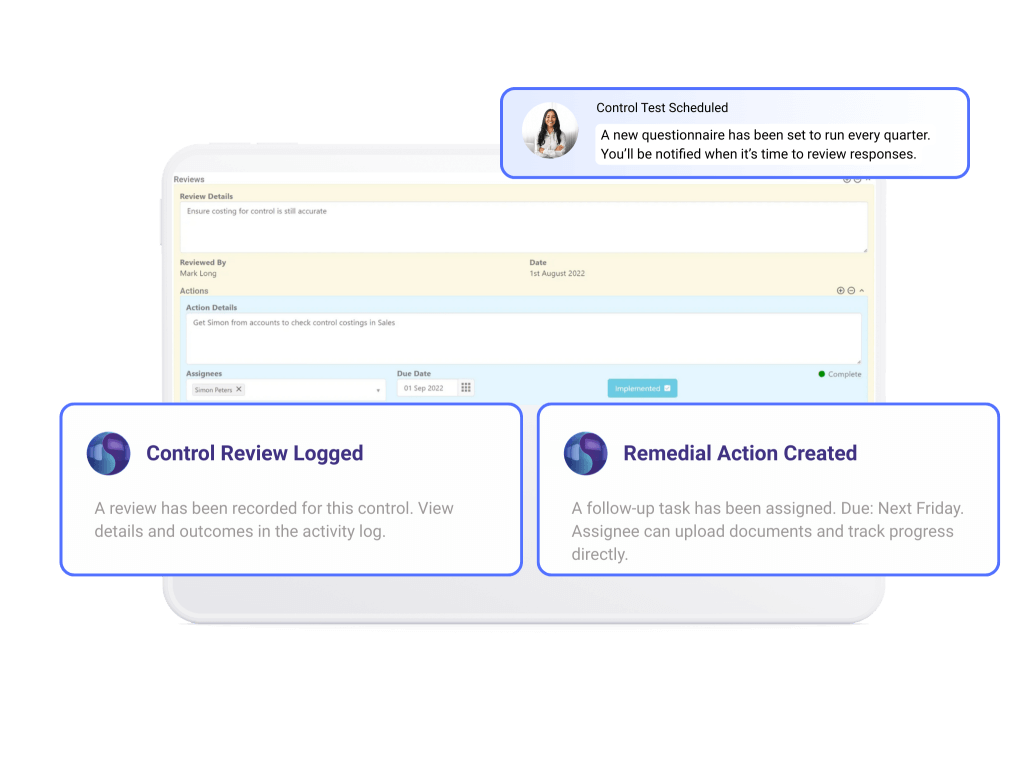
Strengthen your controls. Streamline your compliance.
Controls are not just about compliance, they are enablers of business resilience and performance. With Symbiant’s Controls & Policies Software, you gain the clarity and confidence to demonstrate control effectiveness, ensure ISO 27001 compliance, and prove audit readiness, all while keeping your system agile, intuitive, and cost-effective.
Centrally manage all controls and policies in one platform
Automate testing with scheduled questionnaires
Dynamically adjust risk scores when controls succeed or fail
Link controls directly to risks, incidents, and policies
Generate clear control effectiveness reports for management and auditors
SYMBIANT AI ASSISTANT
Empowering Risk Managers with
Optional AI-Assisted Precision
Symbiant AI Assistant is fully integrated and trained on real-world risk, audit, and compliance challenges. It surfaces hidden threats and unidentified risks, identifies root causes, and predicts the consequences of control failures, showing how risks may cascade and where vulnerabilities exist. It connects your data securely.
Starting from just £100/month*
Unlimited users. Unlimited requests.
Streamlined Risk Management with Symbiant AI
Symbiant AI connects all relevant data across departments, functions, and modules within your organisation. It automatically links risks to business objectives and audit processes, uncovers root causes, and predicts consequences to deliver a unified, actionable risk view.
Actionable Insights with Symbiant AI
Generate detailed reports with AI-powered recommendations for controls, root causes, and consequences, enabling accurate, data-driven decisions. Audit teams can effortlessly review a specific entity and instantly access all connected risks, saving valuable time.
Beyond scoring risks, Symbiant AI delivers deep insights into their causes and the potential impacts of control failures.
Maximise Time Efficiency
Symbiant AI Predicts & Protects
Ensure Privacy and Security
Symbiant’s AI-Powered Assistant is fully GDPR-compliant and built to protect your privacy. It does not collect or store your data. Instead, it creates a temporary cache folder to fulfil each query and immediately deletes the information once the task is complete.
Your data always stays securely within your environment, giving you full control and peace of mind while benefiting from AI assisted insights.
Hover to Explore our Solutions.
Symbiant
All-in-One GRC & Audit
Management Powerhouse
Symbiant’s flexible, modular platform streamlines governance, risk, compliance, and audit—so you can reduce complexity, adapt fast, and stay focused on achieving your objectives.
Our Solution at a Glance:
Risk Management Software
The Symbiant Risk Management Software module enables organisations to identify, understand, and manage risks with ease and efficiency. It provides a streamlined approach to monitoring, assessing, and mitigating risks, ensuring informed decisions and compliance.
AI-Powered Assistant
Symbiant AI connects data across your organisation, delivering actionable insights and seamless workflows. From logical, data-driven risk scoring to uncovering root causes and predicting the domino effect of control failures, Symbiant AI empowers smarter, faster decisions. Eliminate duplicate risks in seconds, refine controls, identify emerging risks, and so much more—all tailored to your business.
Audit Management Software
The Symbiant Audit Management Software module streamlines audit planning, action tracking, and time management. It automatically pulls relevant data, allows easy report customisation, and generates professional audit reports.
Compliance Management Software
The Symbiant Compliance Management Software module simplifies the management of compliance tasks. It helps organisations track regulations, manage audits, and ensure adherence to legal requirements, driving efficiency and minimising risk.
Risk Management Software
The Symbiant Risk Management Software module enables organisations to identify, understand, and manage risks with ease and efficiency. It provides a streamlined approach to monitoring, assessing, and mitigating risks, ensuring informed decisions and compliance.
AI-Powered Assistant
Symbiant AI connects data across your organisation, delivering actionable insights and seamless workflows. From logical, data-driven risk scoring to uncovering root causes and predicting the domino effect of control failures, Symbiant AI empowers smarter, faster decisions. Eliminate duplicate risks in seconds, refine controls, identify emerging risks, and so much more—all tailored to your business.
Audit Management Software
The Symbiant Audit Management Software module streamlines audit planning, action tracking, and time management. It automatically pulls relevant data, allows easy report customisation, and generates professional audit reports.
Compliance Management Software
The Symbiant Compliance Management Software module simplifies the management of compliance tasks. It helps organisations track regulations, manage audits, and ensure adherence to legal requirements, driving efficiency and minimising risk.

Your Central Hub for GRC, Risk, Audit & Compliance Excellence
Discover More in Symbiant’s GRC Knowledge Centre
Looking for even more insights, tools, and practical guidance? Visit the Symbiant GRC Knowledge Centre, your all-in-one hub for governance, risk, compliance (GRC), and audit resources.
Explore our guides, in-depth glossary definitions, industry-specific best practices, and demonstration videos, all organised by industry, organisation size, and compliance framework (including ISO 27001, GDPR, Cyber Essentials, and more).
Whether you’re a charity, SME, or global enterprise, you’ll find tailored content to help you streamline processes, strengthen compliance, and achieve your business objectives, all backed by Symbiant’s award-winning, enterprise-grade GRC, Risk Management & Audit software.







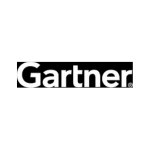

Award winning grc & Audit management software
25 Years. Thousands of Users. One Trusted Platform.
With over 25 years of innovation in Governance, Risk, and Compliance (GRC) and Audit Management, Symbiant is trusted by organisations across every sector. Our clients love how our powerful, affordable, award-winning and fully customisable risk software helps them stay compliant, make smarter decisions, and reduce complexity, without the costly overheads.
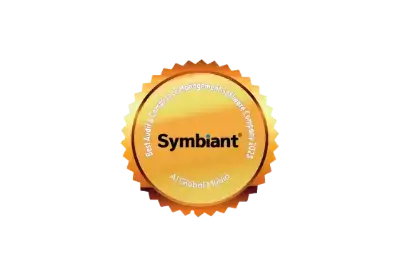

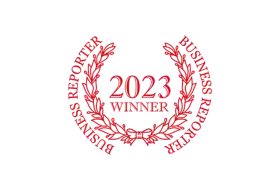
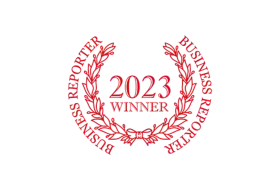





unbeatable pricing

